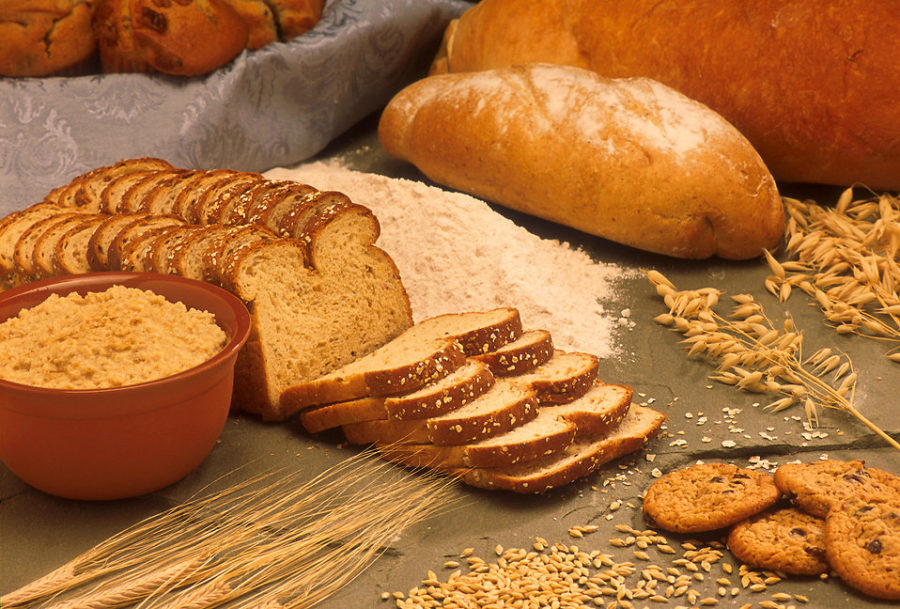Is it time to break up with gluten?
Bread is a frequently consumed item containing gluten.
October 12, 2018
I love gluten, but gluten does not love me back. Unfortunately, I’m not the only person experiencing this issue. Many lovers of bread and other “glutenous” foods are being forced to give them up, but why?
The culprit to this issue lies within the bread itself. Celiac disease is an autoimmune disorder that damages your small intestine and is caused when someone is unable to digest gluten, a protein found within wheat. The degree and sensitivity one experiences to gluten is different, but many people find that removing gluten from their diet reaps many health benefits, even if they have not tested positive for celiac disease. The choice to live a gluten-free lifestyle ultimately comes down to common sense and being able to determine what is best for you.
“‘Eat more healthy whole grains is among the biggest health blunders ever made in the history of nutritional advice,” said New York Times bestseller William Davis in his book, ‘Wheat Belly Cookbook.’ “Modern healthcare, treating millions of people at the cost of hundreds of billions of dollars every year for hypertension, high cholesterol, obesity, arthritis, acid reflux, irritable bowel syndrome, fibromyalgia, migraine headaches, depression, diabetes, various forms of neurological impairment, and on and on, is really treating… wheat consumption.”
Davis is an outspoken advocate when it comes to wheat and it’s harm. It would be ridiculous for Davis to say that everyone who experiences these specific health problems can blame wheat. However, a large portion of people experiencing mystery health problems could potentially find help simply by removing wheat from their diet. Not only does wheat cause larger life altering problems like the ones listed above, it can also cause problems on a much smaller scale like acne, gas and irritability (everyone’s favorites).
So why does something we all love not love us all? In recent years, the amount of gluten found in wheat has skyrocketed, thanks in part to hybridized crops. Gluten is also used as a filler and binding agent for many processed foods according to Dr. Axe in his article “Foods with Gluten Hiding in Plain Sight (Be Wary of the ‘Gluten-Free’ Label)”. Gluten can hide in products like salad dressing, make-up, shampoo, soup, chewing gum, soy sauce, hot dogs, gravies, ground spices, tater tots, potato crisps, caramel coloring, artificial coffee creamers, licorice and on and on and on. The commonality here is that all of these products did not originally contain gluten. In fact, according to, “What’s so bad about gluten?” an article in The New Yorker, gluten now appears in nearly a third of all food at the supermarket. The problem with pumping gluten into everything is that our bodies were not designed to process the magnitude we are consuming.
“Is wheat that necessary for taste, or for texture? I don’t think so,” said Davis. “I think it’s put there for one reason: to stimulate your appetite and increase sales.”
The latest strains of wheat contain transformations of a protein called gliadin. Gliadin is essential to the rising of bread when baking, but it has also been linked to having opiate-like effects; not necessarily the euphoria associated with opiates but the symptoms of increased appetite and calorie consumption.
Although gluten intolerance may seem like a minimal issue, it is rising occurence that will likely not disappear on its own. There are many processed foods on the path to gluten-infusion. For instance, experts say that the corn crop, which is highly genetically modified, is likely to cause humans the next set of digestive disorders.
Going gluten free was once very uncommon, but the trend has caught on like wildfire. Eliminating wheat often makes people feel healthier, and for some, there is a certain sense of rejuvenation that comes from the removal of the grain. Breaking up with wheat can be very tough, and it can take time to heal from the loss. You may even find yourself in denial. However, you cannot confuse your lust for gluten with true love. Don’t worry though, there are plenty of other carbs in the feed.








